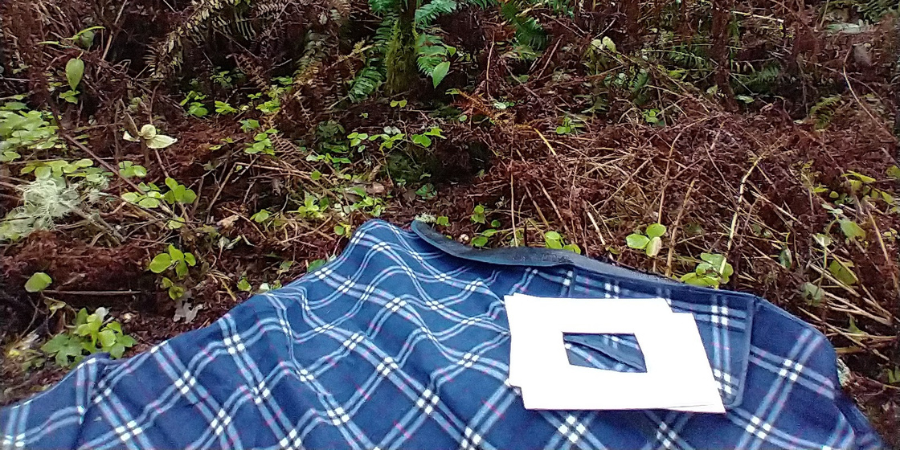
A few years ago, Neal Maine, North Coast Land Conservancy’s founding executive director and a well-known science teacher from Seaside, introduced us to the concept of “Seeing the Unseen.”
The idea is that there is so much more to the natural world than we typically take the time to observe on a daily basis, or even when we intentionally spend time outside.
That’s not to deride any of the activities we often pursue in the outdoors—taking a walk, hiking, skiing, snowboarding, mountain climbing, swimming, kayaking. These can be wonderful, uplifting and inspiring pursuits that deepen our connection to nature and support our health and well-being.
However, these activities tend to let us notice only macro flora and fauna. Or we’re so intent on getting to a destination or completing the task at hand that we don’t notice much of anything at all.
“People tend to not be very observant, and it’s because they’re getting overwhelmed,” Neal says.
That’s where the art of seeing the unseen comes in.
It’s about gifting yourself a moment, or much longer, to stop and observe. To look for the mere purpose of noticing, appreciating and remembering. To focus on the millions of micro wonders that surround us.
“It’s a backdoor way to get people to be observers,” Neal says.
While Neal has led outings to specific places in nature for the purpose of letting people practice seeing the unseen, you can do it anywhere: your backyard, the beach, your favorite trail, a nearby park.

Want to Practice Seeing the Unseen?
Here’s how to get started:
- Gather a blanket, your water bottle or cup of coffee or tea, comfortable clothing (especially if it’s cold outside), and a notebook. Neal also recommends using a frame—or even just a piece of paper with a square cut out of it—to help you narrow down your observations in whatever habitat you’re visiting. A pre-cut mat for framing photos works great! You may also want to bring a magnifying glass if you have one.
- Find a spot outdoors that is approximately one square meter and settle in.
- Give yourself about an hour to be in the present and to observe. Stick to your chosen spot. Use your frame to help you home in on one small section at a time. According to Neal, “You look at something differently when it’s isolated from a context. A leaf sort of becomes a biological phenomenon.”
- If you feel inclined, write down your thoughts, whatever they might be. Or maybe doodle what you’re seeing. There’s no right or wrong way to process your observations or the thoughts and ideas that are spurred by these moments of peace, quiet and contemplation.
One meter may sound like a very tiny area. How could there possibly be enough to observe for an entire hour? But give it a try!
“It’s shocking to find out what’s there,” Neal says. “You end up discovering a whole new world.”
In his experience, people often end up finding out that one hour isn’t enough time.
“This way slows you down and you realize, ‘I need a couple days to do these next 50 feet,’” he adds.
You don’t even have to worry about drawing or writing if you’re not so inclined. But Neal encourages people to at least take mental pictures.
“When you purposely say, ‘I’m looking at that to remember it,’ you actually do kind of take a picture,” he says. “It gets rid of all of the clutter, and you start finding beauty everywhere.”

Comments